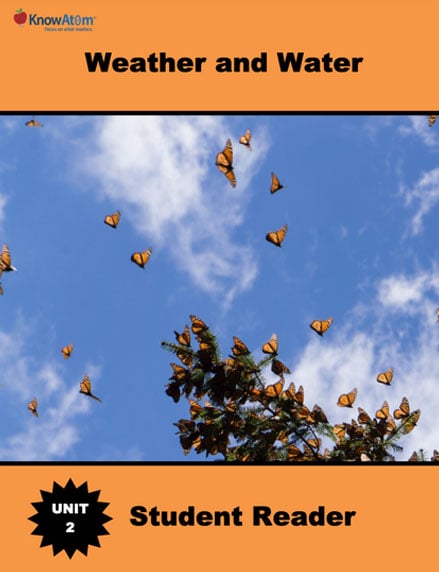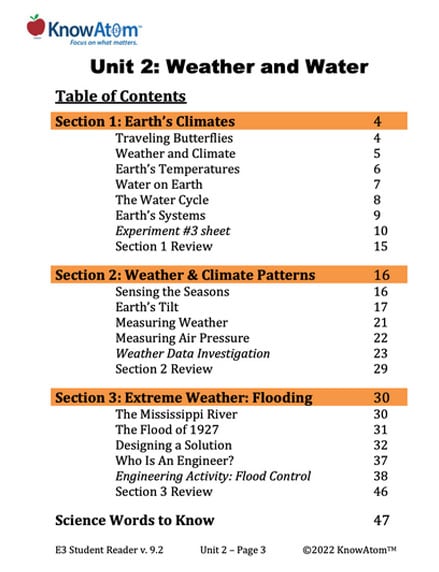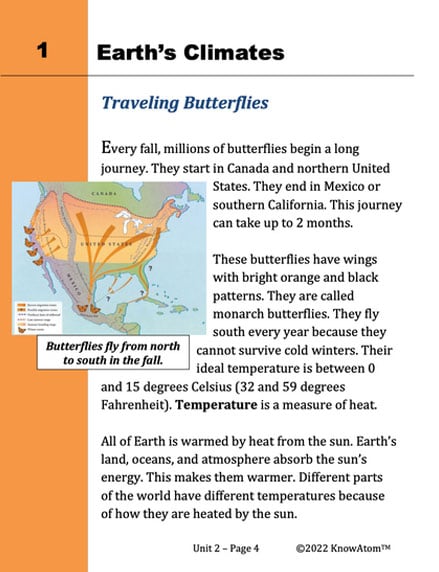Air Pressure : a measure of the force of air’s weight on Earth’s surface; measured with a barometer
Climate : the average weather over a span of 30 years
Evaporation : the process of liquid water changing into water vapor, its gas state
Precipitation : the process of water falling back to Earth in the form of rain, snow, sleet, or hail
Proportion : the relationship between things, as to size, quantity, or number
Season : a time of year that has specific weather patterns and amounts of daylight
Temperature : a measure of heat; measured with a thermometer
Water Cycle : the circulation of water from a collection to the atmosphere and back to Earth in
Four Steps: evaporation, condensation, precipitation, collection
Weather : the conditions of the atmosphere (temperature, humidity, wind speed, air pressure, and precipitation) in a particular place at a particular time
Wind Speed : a measure of how fast wind is moving; measured with an anemometer






.png?width=326&height=418&name=Screenshot%20(11).png)



